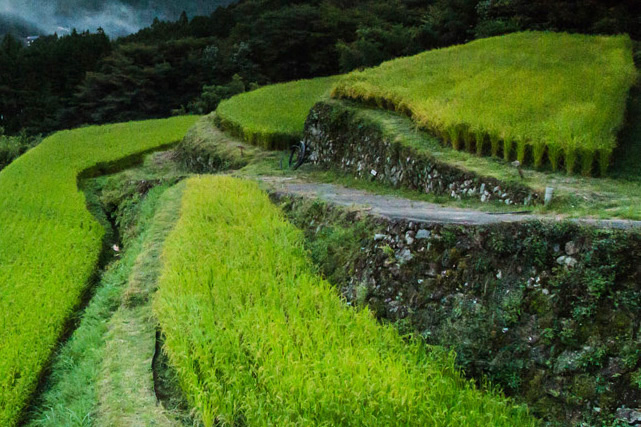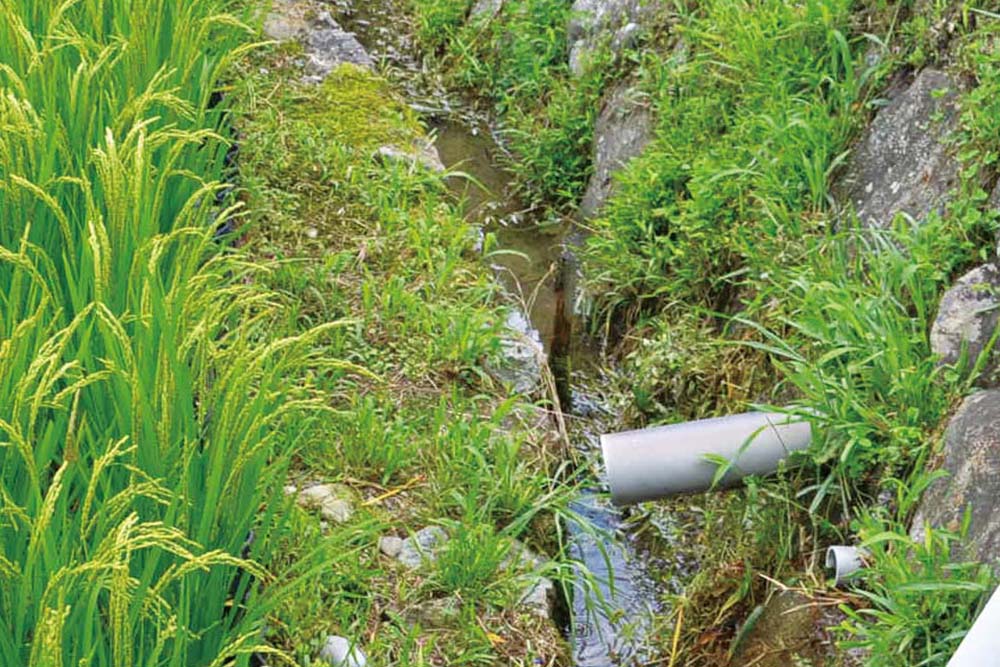In the Sakaori terraced rice fields area, only naturally occurring stones are used. There are a variety of uses for the stones – on farmland, residential land, protecting the river banks and forestation of the land. The area of Sakaori terraced rice fields is sloping land made up of rocks, pebbles, sand and clay. The rocks and pebbles were obstacles to any land development in general, but on the other hand, they were also very useful when it came to masonry and it was very convenient to use the rocks that were so close to hand. So, ancient people used the rocks and pebbles to make tools and roads.
The Sakaori terraced rice fields area has a great degree of topography and geology from east to west, across the Sakaori river. The land on the west side is steep and the natural stones are small, so they tend to form tall piles of stones. There are many narrow channels that allow the flow of spring water down the slopes.
However, on the other side, there are a lot of low lying piles of large stones.
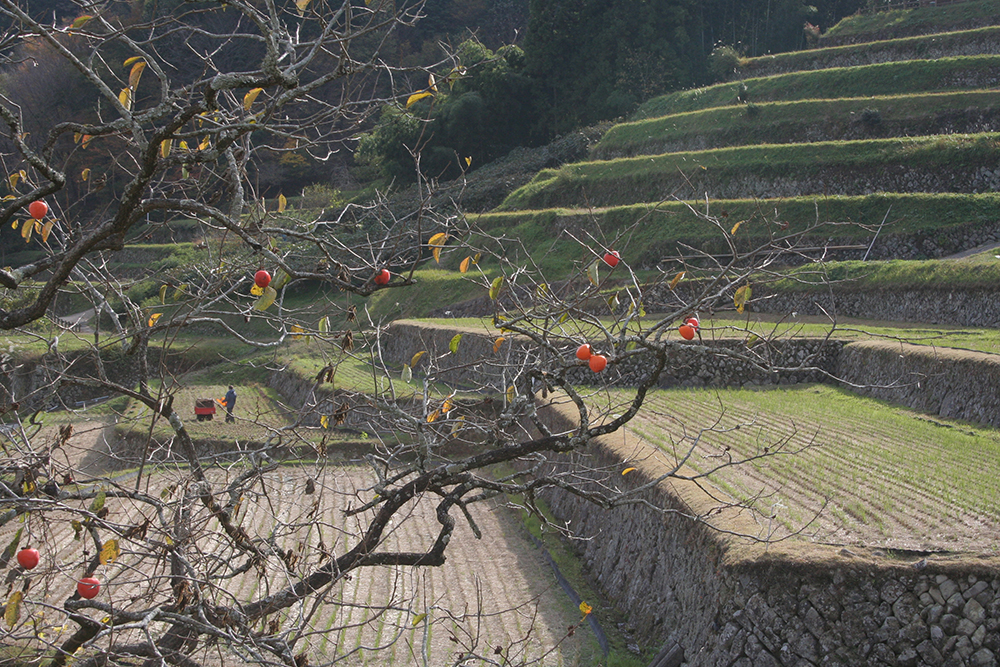
|

|
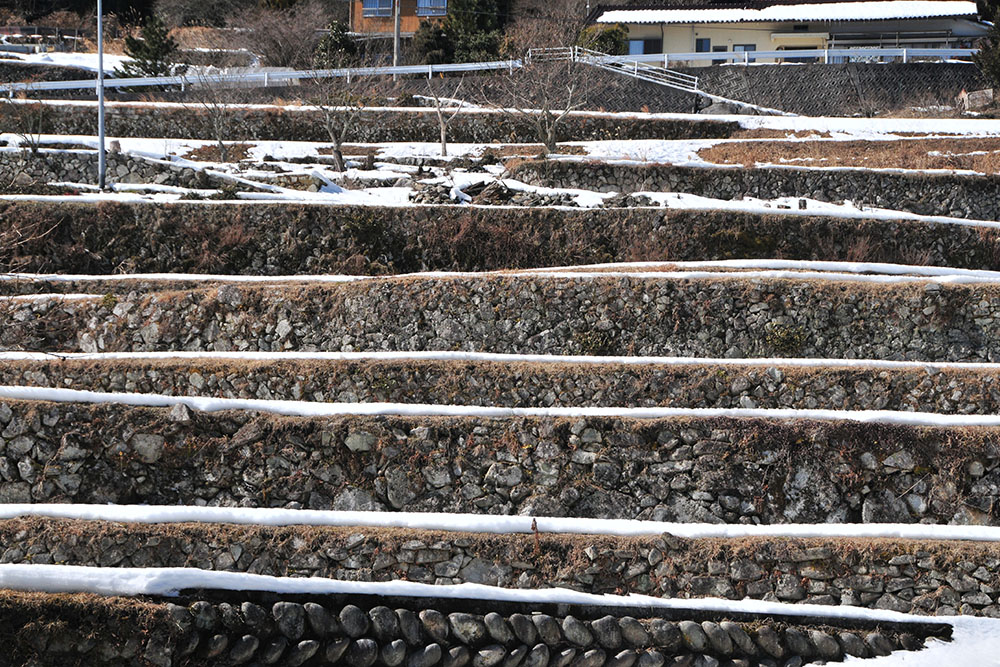
|
The Kurokuwa group of masons
History of the masonry
The Sakaori terraced rice fields were first built in the 1600s. They were built by a masonry group known as Kurokuwa. This group was in charge of the masonry for castles built from the late 15th century to the late 16th century.
The Sakaori terraced rice field are the successor to the original terraces built by Kurokuwa. From the 1600s to the 1800s, our predecessors repaired the original masonry as well as expanded the area of rice fields.
The Ena city Sakaori Tanada preservation society learns and passes on traditional masonry techniques as well as repairing the stone walls that are in danger of collapse.
Yoko zumi – horizontal arrangement
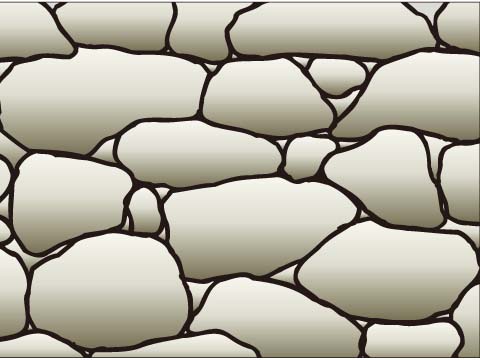 This is the oldest method of building stone walls. In this method, stones are placed side by side, horizontally. In between two stones placed together, another stone is placed. This helps displace the total load on the wall.
This is the oldest method of building stone walls. In this method, stones are placed side by side, horizontally. In between two stones placed together, another stone is placed. This helps displace the total load on the wall.
Tani zumi – diagonal arrangement
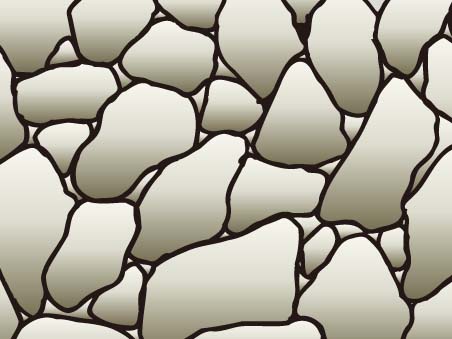 This is the traditional method used by Kurokuwa in the 1600s. Stones are stacked diagonally to form a “V shape”. Other stones are then placed on top of the “V shape”.
This is the traditional method used by Kurokuwa in the 1600s. Stones are stacked diagonally to form a “V shape”. Other stones are then placed on top of the “V shape”.
Ran zumi – irregular arrangement
 This is the most basic method and is used by beginners. The size and shape of the stones are varied and arranged randomly.
This is the most basic method and is used by beginners. The size and shape of the stones are varied and arranged randomly.
Sumikado Ishi – corner stones
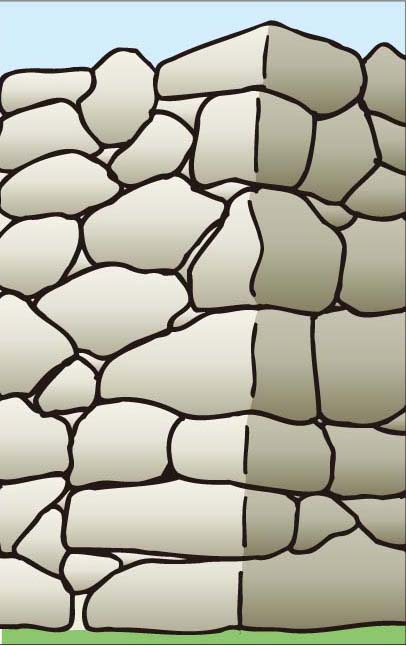 Building corners of stone walls
Building corners of stone walls
Sangi Zumi – clear corners
The method of how to stack stones in walls with obvious and visible corner stones.
 Kyokusen Zumi – curved arrangement
Kyokusen Zumi – curved arrangement
How to arrange stones in a curved shape
Using and replenishing natural water from the mountains
The main source of water for the Sakaori terraced rice fields is groundwater from the surrounding mountains. The groundwater flows in to the local river or comes up as spring water. This water then flows in to the terraced rice fields. Our predecessors developed various techniques to utilize the water.
Canal technology
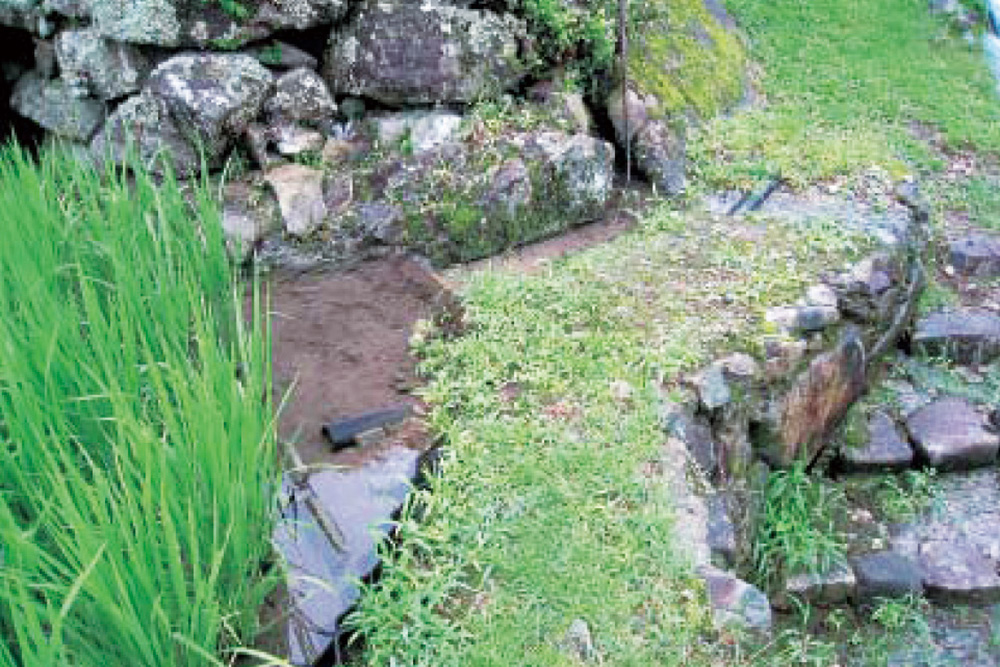 Groundwater tends to have a low water temperature, which is not suitable for producing rice. So, a complicated set of irrigation channels was built. When the water flows through this set of irrigation channels, it warms to a temperature that is perfect for making good quality rice.
Groundwater tends to have a low water temperature, which is not suitable for producing rice. So, a complicated set of irrigation channels was built. When the water flows through this set of irrigation channels, it warms to a temperature that is perfect for making good quality rice.
Water intake technology
This prevents cold groundwater from entering rice fields directly. The spring water is stored outside of the rice fields until it is suitable to use.

